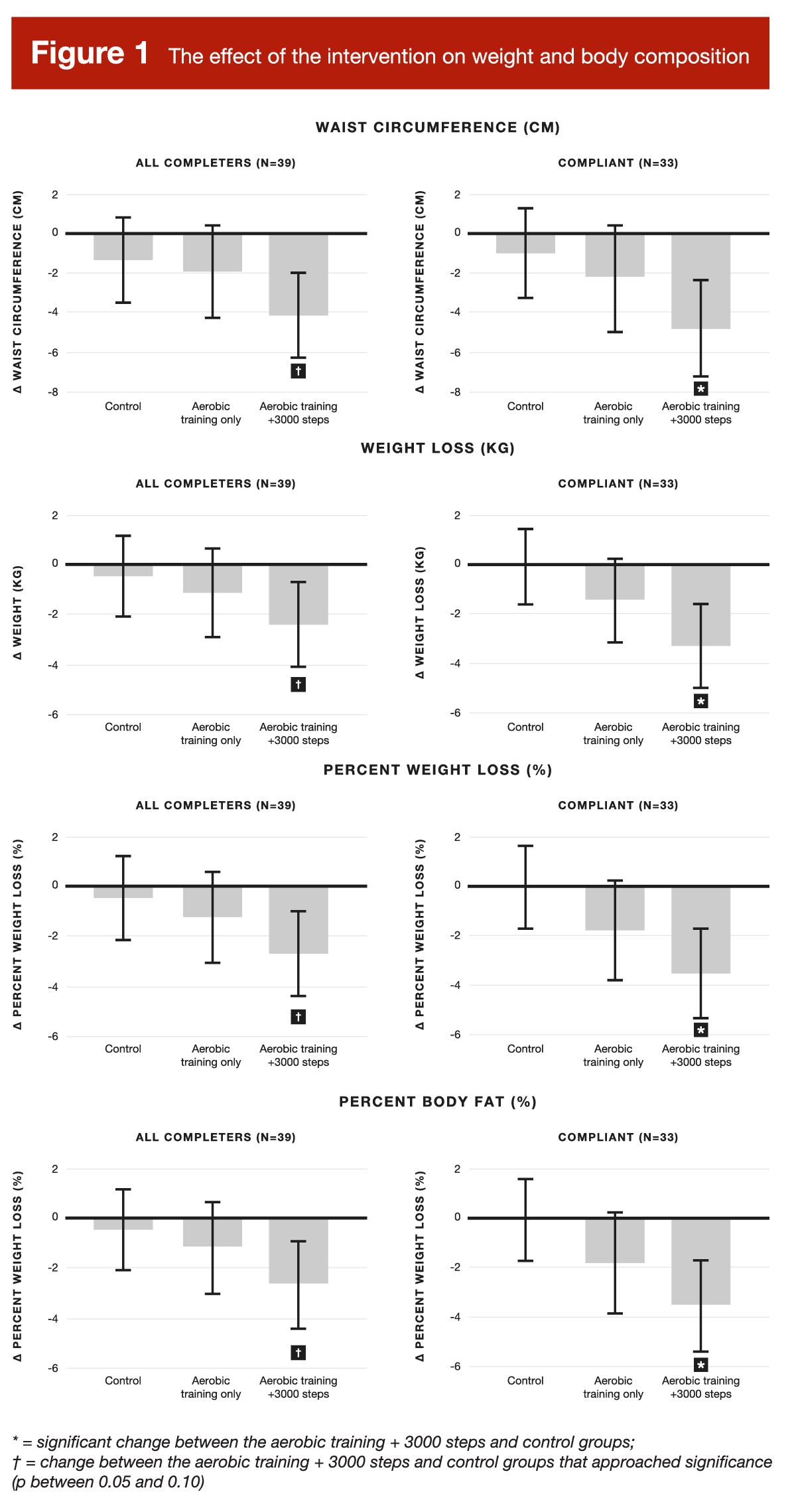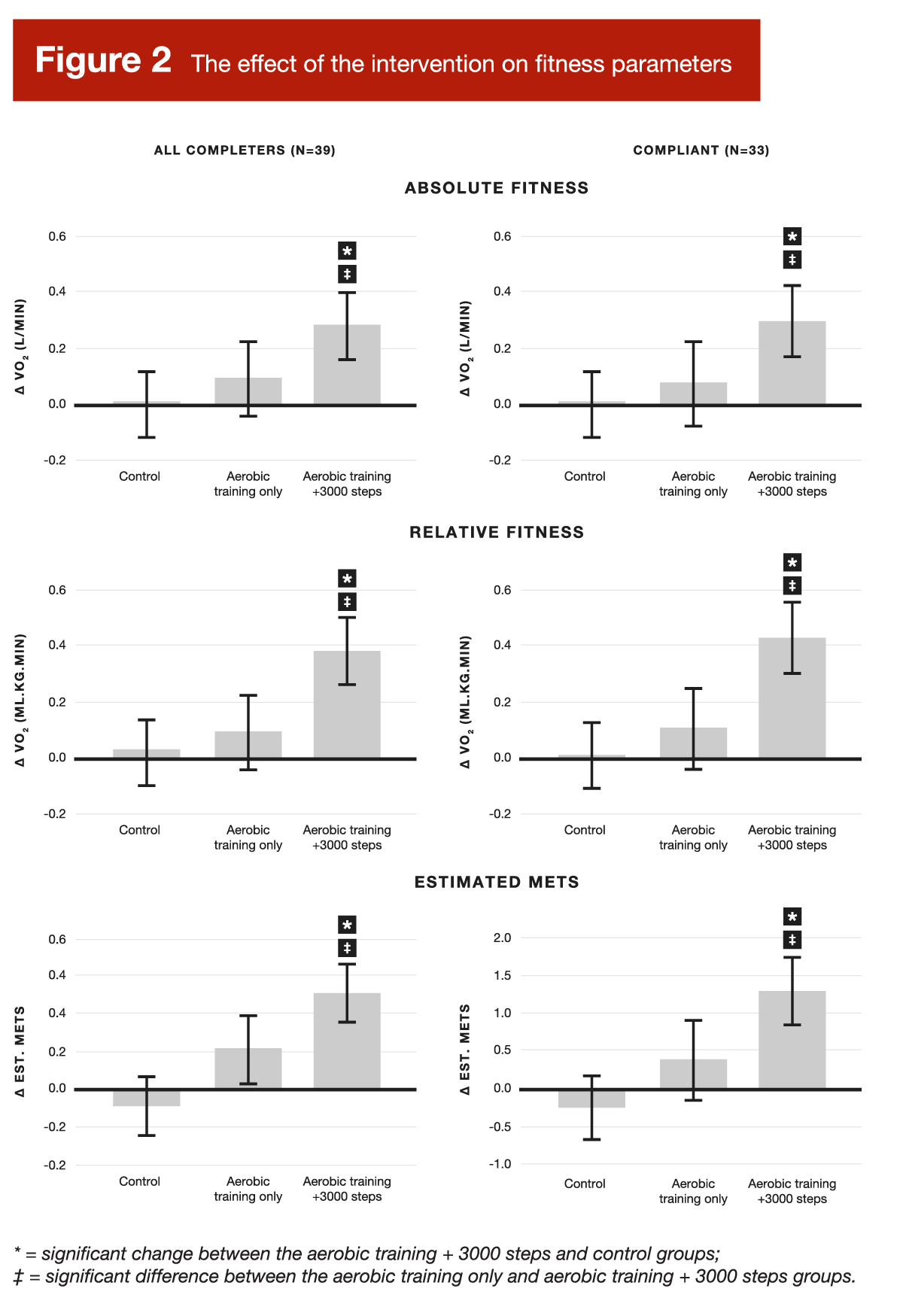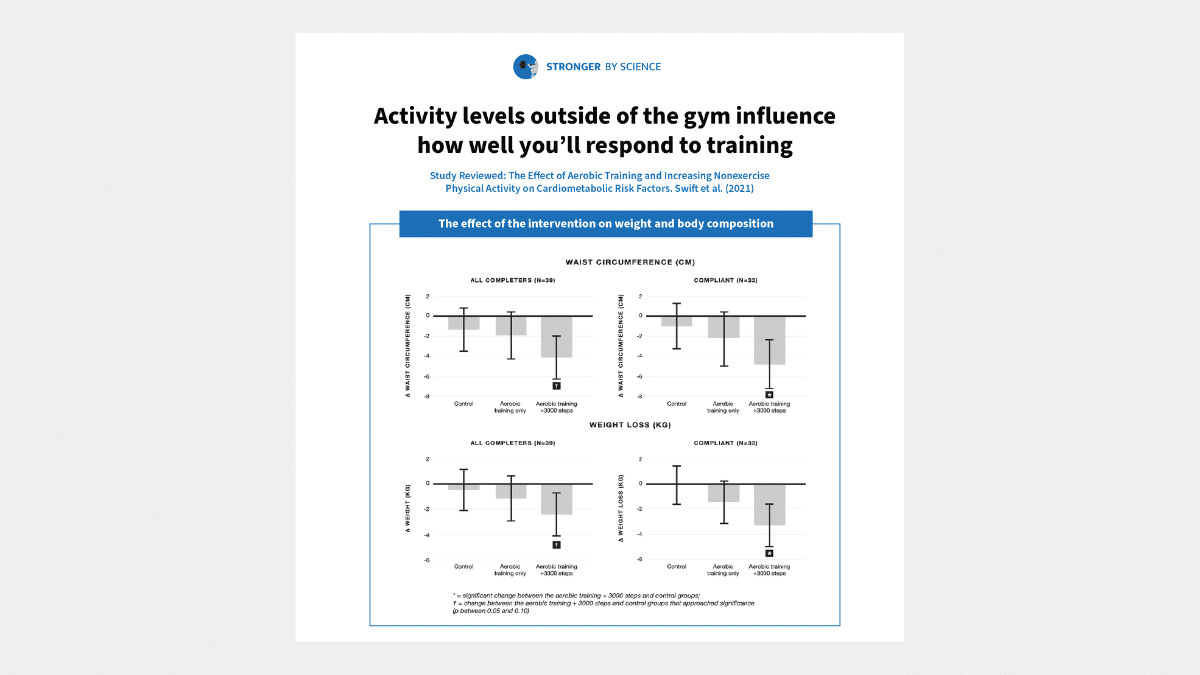When most people (myself included) talk about doing things “outside the gym” to help with responsiveness to training, three things immediately come to mind: nutrition, sleep, and stress management. But what if there’s an additional major “outside the gym” factor that affects how well you’ll respond to training? And what if it’s something that’s also strongly predictive of all-cause mortality rates (as we discussed in another recent research spotlight)?
That’s right! We’re talking about walking again.
In a recent study, middle-aged (52.6 ± 7.6 years old) individuals with obesity (BMI = 36.0 ± 4.8) were randomized into three groups: one group served as a non-training control group, one group completed 3-4 aerobic exercise training sessions per week (about 40-50 minutes on an inclined treadmill per session, at an average heart rate of 125-130 beats per minute), and one group performed the same aerobic training, while also aiming to increase their daily step count (via non-strenuous means) by ~3000 steps per day. Of note, at baseline, subjects in all three groups averaged 4000-5000 steps per day (which isn’t too far below the average for US adults), so the group aiming to increase their step count was aiming for 7000-8000 steps per day (outside of their aerobic exercise sessions).
The intervention lasted 24 weeks. Body weight, waist circumference, aerobic fitness (VO2max), and a host of blood biomarkers (mostly focusing on blood lipids and insulin resistance) were assessed pre- and post-intervention.
The researchers reported the results two ways: they showed results for all people who completed the study, and for just the people who were compliant with the study protocol. That distinction didn’t affect the results very much (mostly because only six subjects who completed the study were insufficiently compliant), but for the sake of thoroughness, I’ve included the graphs (Figures 1 and 2) for both segments of the cohort.
As you can see, outcomes were generally better for the aerobic training group than the control group (though most of the differences didn’t reach statistical significance), and were better yet in the group performing aerobic training while also increasing their daily step counts. When comparing the two aerobic training groups, the subjects that increased their daily step counts lost about twice as much weight (though weight loss wasn’t eye-popping in any of the groups) and experienced a three-fold larger increase in aerobic fitness than the subjects who just completed the aerobic training protocol without increasing their daily step counts. Furthermore, the blood biomarker outcomes were pretty noisy, but absolute mean improvements were generally largest in the group that performed aerobic training while increasing their daily step counts.



Now, this study clearly leaves us with a lot of unanswered questions. Could we expect similar results with resistance training outcomes? Could we expect similar results if step counts were being increased from 8,000 to 11,000 instead of 4,500 to 7,500? Did the age and training status of the subjects influence the results? I’m certainly not willing to go out on a limb and confidently proclaim, “walking 3,000 more steps per day is the one weird trick for getting jacked.” However, I have noticed that when I’m generally more active, my training tends to go better (more energy in the gym, faster strength gains, and fewer aches and pains).
With that being said, if you have clients, friends, or family members who are just trying to get in better shape, the results of this study may directly apply to their situation. If they’re pretty sedentary overall, they’re doing a bit of cardio, and they’re frustrated by their rate of progress, helping them implement strategies to simply be a bit more active throughout the day could pay dividends.




